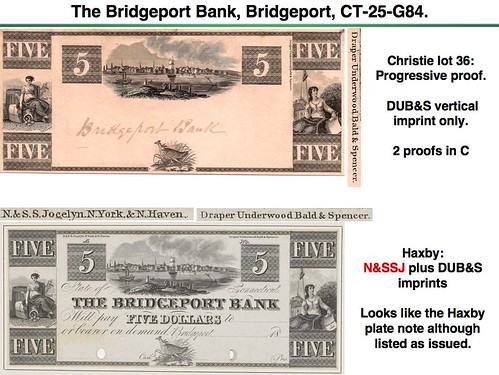
PREV ARTICLE
NEXT ARTICLE
FULL ISSUE
PREV FULL ISSUE
MORE ON AUDUBON'S FIRST ENGRAVED ILLUSTRATION
News of Eric Newman's discovery of the first bird engraving by James Audubon has traveled far and wide. On Wednesday, August 4th, National Public Radio (NPR) picked up the story.
Reporter Renee Montagne interviewed Robert Peck.
-Editor
And now a mystery solved. Back in 1824, naturalist John James Audubon wrote in his diary that he had drawn a small grouse for a Philadelphia engraver. The drawing was meant to appear on a banknote being issued in New Jersey. It would've been Audubon's first published illustration. Scholars searched for it for decades, unsuccessfully, until currency expert Eric Newman and Audubon scholar Robert Bob Peck joined the hunt. He joins us from Philadelphia. To listen to the interview, see: Audubon's First Print Is Found, Ending Long Search (www.npr.org/templates/story/story.php?storyId=128934691) Katie Jaeger writes: I enjoyed reading your excerpts from the Inquirer article about Eric Newman's Audubon discovery, but I felt a niggling déjà vu. There was something I'd read in the past having to do Audubon and claims about grouse. This morning I found it, in a book given to me by Q. David Bowers called The Rarest of the Rare: Stories Behind the Treasures of the Harvard Museum of Natural History. This Harper Collins coffee-table book published in 2004 has color illustrations of neat items in the collections, with explanatory text on the facing pages. According to an article on p144, “Audubon's Untruth.”, apparently the issue of grouse and illustrations was a sore point with the man. Perhaps the Inquirer writer was alluding to this incident when she used the phrase “typical Audubon exaggeration.” None of this diminishes the importance of Newman's find: Bravo! By the way, the Inquirer article you posted last week stated Audubon was 29 in 1824 (at the time of his grousy diary entry) but according to my Britannica he would have been 39 at the time. Eric Newman writes: Thank you for publishing your extensive write up in The E-Sylum for August 1, 2010 about the discovery of the earliest engraving of an Audubon bird. The detailed article will be published in a few weeks by the University of Pennsylvania Press in The Journal of the Early Republic. Robert Peck (Senior Fellow of the Academy of Natural Science of Philadelphia) invited me to join him in trying to solve this age old problem. All it took was persistence and luck. A comic comment about it by my numismatic friend Chemistry Professor Peter Gaspar of Washington University in St. Louis is a pun worth repeating -- that the article was a "RARA AVIS". Alan Stahl of Princeton University writes: Eric Newman and his co-author Robert Peck, as well as the editors of The Journal of the Society of Early American Republic, have generously given the Princeton University Numismatic Collection permission to publish an edited version of their newsmaking paper on Audubon's grouse in the forthcoming catalogue of our exhibit Money on Paper, Bank Notes and Related Graphics from the Collections of Vsevolod Onyshkevych and Princeton University.
Further information on the catalogue and exhibition can be obtained from Alan Stahl, Princeton's Curator of Numismatics, astahl@princeton.edu.

Bernhard Wilde writes: I have been following the Peck/Newman story. This topic is presently being discussed on a currency forum at forums.collectors.com/messageview.cfm?catid=23&threadid=783255 Given the incomplete information in the press releases, the upcoming article seems to indicate that there are three known surviving impressions of Audubon's "running grouse" on currency. My conclusion is that there are probably at least six surviving impressions:
1. The Ohio proof
Maybe the complete article will discuss the last three impressions.

To read the earlier E-Sylum article, see:
ERIC NEWMAN DISCOVERS AUDUBON'S FIRST ENGRAVED ILLUSTRATION
(www.coinbooks.org/esylum_v13n31a07.html)
The Numismatic Bibliomania Society is a non-profit organization promoting numismatic literature. See our web site at coinbooks.org. To submit items for publication in The E-Sylum, write to the Editor at this address: whomren@gmail.com To subscribe go to: https://my.binhost.com/lists/listinfo/esylum All Rights Reserved. NBS Home Page Contact the NBS webmaster 
|
